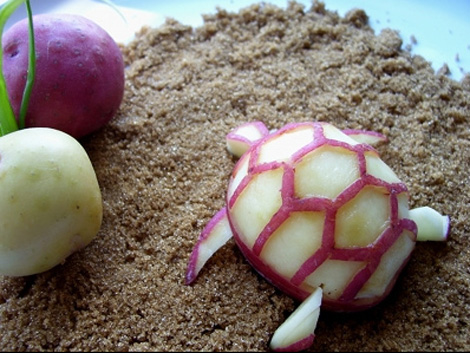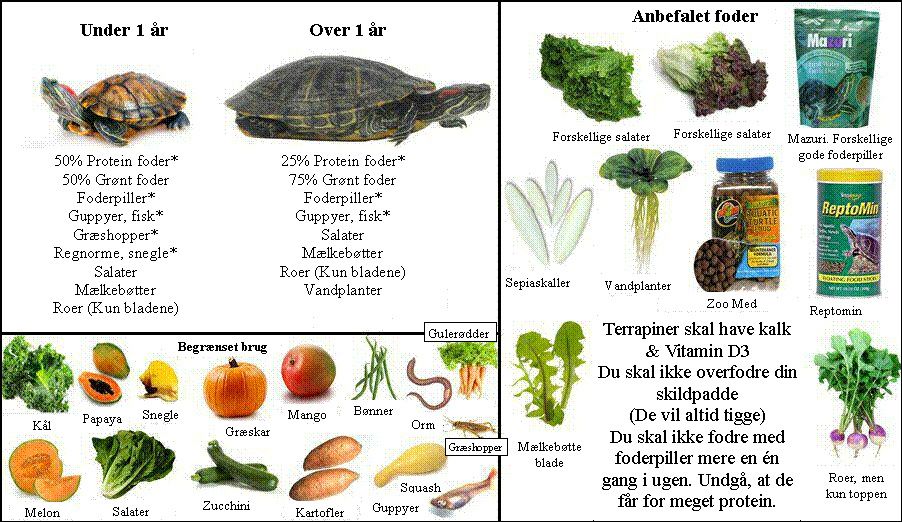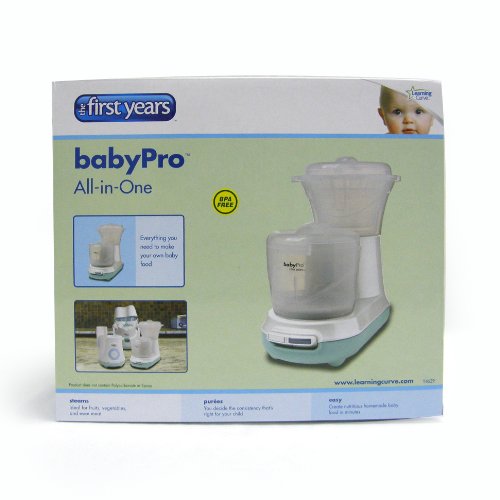Best food for baby turtles
What Should Baby Turtles Eat? BEST Baby Turtles Food In 2022
What do baby turtles eat?
Usually, each baby turtle’s diet is similar, if not identical, to that of the adult species.
The main potential differences are that higher amounts of animal protein and calcium are often required for omnivorous species. This supports their rapid growth, healthy bones, and tough shell.
All turtle foods usually need to be cut into much smaller pieces to encourage a healthy appetite and digestion. Each species has its own particular needs of course, so let’s explore them!
What To Feed Baby Turtles
We’ll be taking a look at the diet of 4 popular baby turtle species:
- Red Eared Sliders
- Box Turtles
- Painted Turtles
- Snapping Turtles
1. What Do Baby Red-Eared Sliders Eat?
Red-eared sliders are probably the most popular aquatic turtles kept as pets.
It is easy to understand seeing how adorable they are as hatchlings!
In their natural environment, red-eared sliders are opportunistic omnivores. They eat a large variety of vegetation, small fish, and insects.
It’s best to provide as much variety as possible in your baby turtles’ diet. This will ensure that they will be accepting of a healthy assortment of foods throughout their lives.
Another important and more practical aspect of their popularity as pets is just how well they do on a majority-commercial diet.
A balanced, commercially available turtle pellet (such as this one) is an optimum staple of the turtles’ diet, even as a hatchling.
These pellets have a very long shelf life, making them extremely convenient, they’re readily accepted and are a well-balanced combination of proteins, vitamins, and minerals.
Live crickets or mealworms provide a nutritious, and much appreciated treat whenever convenient, as well as environmental enrichment.
Keeping some small feeder fish in the baby turtle’s tank is a great way to provide consistently available enrichment and exercise, and are a much-appreciated snack.
The best leafy vegetables for a baby red-eared slider include:
- green leaf lettuce
- red leaf lettuce
- dandelion leaves
- aquatic turtle plants
But it is best to avoid leaves such as kale, cabbage, and spinach.
2. What Do Baby Box Turtles Eat?
Box turtles are also an extremely popular small turtle breed.
Their mostly land-based life, and easy-to-maintain diet, make them probably the most easily species of turtle to keep.
Like most turtles, box turtles are omnivores. The baby box turtle’s diet should be about half animal protein and 25% fruits and 25% greens.
The baby box turtle’s diet should be about half animal protein and 25% fruits and 25% greens.
When babies, a diet that’s comprised of as many live foods as possible is ideal.
Earthworms, nightcrawlers, crickets, and super worms are perfect.
Many box turtle enthusiasts swear by the moist zoo-med box turtle diet specifically, which is available on Amazon.
This product is readily accepted by most box turtles, stimulates appetite, and provides most nutritional needs, including plenty of vitally important vitamins and minerals.
Supplement any commercial diet with plenty of fruits, vegetables, and greens:
- apples & berries
- dandelion greens & lettuce
- peas & green beans
- collard greens
Dried fruit mixes are readily available whenever fresh fruits are inconvenient. Offer a variety and see which foods your turtle likes best!
Box turtles appreciate privacy when eating.
A great way to promote their appetite is placing a shallow feed bowl in a secluded area of their tank using rocks. Then surround it with fake plants suctioned to the glass. Real foliage can even be used and can double as a snack (as long as it’s safe to eat!).
Then surround it with fake plants suctioned to the glass. Real foliage can even be used and can double as a snack (as long as it’s safe to eat!).
Whenever a baby box turtle seems to be eating less than is healthy, make sure to add food in the late morning or early afternoon when they’ve had a bit of time to warm up and forage about.
Cut all foods into smaller pieces, then add a bit more seclusion to their feeding area.
Eating takes focus away from potential predation so privacy can provide seclusion and decrease any anxieties that your baby may have, particularly while adjusting to a new environment.
3. What Do Baby Painted Turtles Eat?
Painted turtles eat a lot of aquatic life in the wild, and their diet consists mostly of scavenged carrion, small fish, tadpoles, and worms.
Commercial diets should only comprise about a quarter of the painted turtle’s diet, making them a little more high maintenance than other species.
These purchased foods can only be fed in the water since painted turtles require gulps of water to swallow and digest their food.
Baby-painted turtles, specifically, are exclusively carnivorous.
Live food is an absolute necessity and should be the majority of their diet, but a commercial pellet or food mix is an acceptable replacement for some protein.
Freeze-dried brine shrimp is also a good alternative to live food, but hatching brine shrimp from eggs available on Amazon is quite simple and will be much appreciated by your baby-painted turtle.
Small guppies or feeder fish should be kept along with your pet baby turtle as a major part of their diet; these will stimulate sufficient exercise and keep your baby turtle mentally occupied.
A happy turtle is a healthy turtle!
As your turtle gets larger, greens like spinach or romaine should slowly be added over time.
4. What Do Baby Snapping Turtles Eat?
In short, snapping turtles will eat anything!
As babies, it’s important to provide a varied diet and ensure that enough calcium is available.
Snapping turtles are one of the largest freshwater turtle varieties and can live almost as long as humans.
So while that tiny baby may be adorable, it’s important to know what a huge commitment a snapping turtle really is when taking one into your home.
Keep an ongoing supply of feeder fish in the water with your baby snapping turtle at all times.
Unlike many baby turtles, size is not a critical issue. As long as the fish is small enough to get its mouth around, the baby snapping turtle will happily eat it.
Mealworms and frozen bloodworms or shrimp are also readily available.
Commercial foods are happily eaten by baby snapping turtles as well, freeze-dried mixes are affordable, easy to store, and quite healthy.
Lightly cooked meats like chicken, pork or ground beef can be offered every few days. Greens should also be offered a few times a week and are excellent for healthy digestion and to supplement calcium intake.
What Do Baby Turtles Eat?
Whatever type of baby turtle you’ve chosen, a healthy diet is important.
One that’s appropriate for their species as a hatchling is vital to their growth and health.
So in order to have a happy, long-lived pet turtle, feed them well from the start.
Make sure you have a good turtle tank filter to clean away any uneaten food and ensure they have successful shell sheds.
|
What Do Baby Turtles Eat in the Wild and As Pets?
Slow-going turtles that live in an aquarium and can be just as fun to watch as cats and dogs. Like most reptiles, they are fairly easy to maintain. They live for a long time, especially when you feed them right.
They live for a long time, especially when you feed them right.
As a turtle mom or dad, you may want to make sure your baby turtle is eating the right kinds of food, or feed them a diet as similar to a wild turtle as possible. We’re going to cover what baby and adult turtles eat in the wild and also what you can feed them as pets, depending on your preferences.
What Wild Turtles Eat
Image Credit: Nature_Blossom, PixabayTurtles are found on every continent in the world except Antarctica. You will likely spot a turtle along the bank of a small pond, stream, or lake. They love damp areas with lots of rocks or spaces they can hide. This means that they like to eat things you can find in these areas.
Wild turtles eat a variety of things in nature. When they are babies, they mostly eat meat because they need the protein to keep growing. Types of protein they like to eat include small insects, snails, worms, and fish. When they get bigger, they can start eating more and more plant-like substances.
What Pet Turtles Eat
What your pet turtle needs for nutrition depends on the species and age of your turtle.
Omnivorous vs Carnivorous vs Herbivorious TurtlesThere are three kinds of turtles; carnivorous turtles are rarer and eat only meat, omnivorous turtles are more common and eat meat and vegetation, and herbivorous turtles eat only vegetation. Box turtles, Mississippi maps, and red-eared sliders are omnivorous and common pet turtle breeds. Musk turtles are carnivorous.
What Do Adult Pet Turtles Eat?
Image Credit: SeaReeds, PixabayJust like in the wild, a turtle’s diet needs to change as they age. It’s important to know how old (approximately) your turtle is so you know what to feed him.
Pet turtles that are mature and omnivorous can eat pelleted food specifically made for turtles. You can find this kind of food at most pet stores. Again, check the species to make sure you are giving your turtle the right diet.
Most turtles do well on pellet food containing between 40-45% protein and 6-8% percent fat. The moisture content counts too: the higher moisture content in the food, usually the higher percentage of protein and fat inside the food. Look for “fish meal” towards the top of the ingredients list.
The moisture content counts too: the higher moisture content in the food, usually the higher percentage of protein and fat inside the food. Look for “fish meal” towards the top of the ingredients list.
Turtle-specific pellets should make up at least 25% of your turtle’s diet. It’s important to get food specific for turtles as it stays intact more easily when it contacts water, and it also floats.
The rest of your turtle’s diet should be 25% from a protein source, like a comet goldfish, which also provides essential nutrients like calcium and phosphorus.
The final 50% can be made up of fruits and vegetables. Vegetables should be rich with colors, such as dark, leafy greens, shredded squash, and carrots. You could also opt to feed your turtle aquatic plants like duckweed.
Occasionally you can offer meat, but this is not always beneficial. Turtles benefit most from the nutrient livers of feeder fish, and won’t get much of what they need from the kind of meat we normally eat.
Herbivorous turtles, like land turtles or tortoises, can be fed only fruits and vegetables. Aim for 20% fruits and 80% vegetables total.
Related Read: 10 Best Turtle Foods 2021 – Reviews & Top Picks
What Baby Pet Turtles Eat
Image Credit: PixabayBaby turtles in the wild eat from different food sources sometimes because they are growing. In general, you should feed a baby turtle a little more protein than you would an adult turtle. You can replace some fruits and veggies with a little more pellets and feeder fish if your turtle is still growing.
Pellets are a great option here, but you could opt to feed him live food instead. Baby turtles can eat the same kinds of proteins adults can: earthworms, snails, slugs, grasshoppers, beetles, and crayfish. Ask your local pet store if they have live food for reptiles, and this is where you can buy it.
One thing you might want to consider adding to your pet baby turtle’s diet is a gel capsule supplement. You can find these at most pet stores. Just make sure the label indicates that it’s for your specific breed of turtle.
You can find these at most pet stores. Just make sure the label indicates that it’s for your specific breed of turtle.
Ultimately, you want to make sure what you feed your baby turtle has variety. That way, you know he is getting all the nutrients and vitamins he needs.
Is It Okay to Keep a Wild Turtle?
Generally, no. For one, turtles in nature are wild animals. They are not used to human interaction, and will therefore not make very good pets. Wild turtles could carry diseases that captive-bred turtles don’t have (though both can carry some, which is why you should always wash your hands after handling). Lastly, some states ban captivating wild turtles. It’s frowned upon by conservationists, as well. These are all the reasons it’s not a good idea to keep a wild turtle.
- Here’s another interesting read about turtles: 17 Turtles Found in Illinois
Baby Turtle Care Tips
Image Credit: PixabayFeed them in a separate aquarium to keep your main habitat clean. Alternatively, you can sprinkle pellet food on top of their water. Whatever you feed them, make sure it’s shredded into small pieces to make it the easiest to eat.
Alternatively, you can sprinkle pellet food on top of their water. Whatever you feed them, make sure it’s shredded into small pieces to make it the easiest to eat.
Turtles eat every day when they are young. Once they are about 7 years old, you can feed them once every 2 days. They can be fed 1 cup of turtle food per day, or whatever amount they can eat in around 20 minutes.
Never feed your turtle cat or dog food, as the protein content is too high and could harm your turtle.
- Here’s another topic of interest: Can Turtles Eat Chicken? What You Need to Know!
Baby turtle’s diet needs differ slightly from adult turtles, just like in the wild. They require a little more protein and rely more on essential nutrients than full-grown adults, and that’s about the only difference. When it comes to feeding a baby turtle a pellet diet or live food, the choice is up to you.
Looking for more information on turtles? Take a look at:
- How To Take Care Of A Turtle Egg: A Beginner’s Guide (with Pictures)
- Do Turtles Need a Heat Lamp at Night? Lighting Guide For Your Pet Turtle
- How Many Babies Do Turtles Have? How Many Eggs Do They Lay?
Featured Image Credit: Gauthier Pous, Pixabay
How and what to feed red-eared, marsh and other aquatic turtles
Aquatic ornamental turtles are frequent inhabitants of home aquariums. These cute reptiles are very fond of children and adults. In order for the turtle to live a long and fulfilling life in a closed tank, you need to create appropriate living conditions for it and pay special attention to the right diet.
These cute reptiles are very fond of children and adults. In order for the turtle to live a long and fulfilling life in a closed tank, you need to create appropriate living conditions for it and pay special attention to the right diet.
In this article, we will look at popular brands of complete food and treats for aquatic turtles, how many times a day, at what time and how to feed them correctly, whether turtles need mineral and vitamin supplements, differences in the diet of adults and small pets, as well as depending on from the type of turtle.
Features of feeding aquatic turtles
Aquatic turtles eat plant and animal food. During the period of growth and formation of the body, turtles need food rich in protein. Natural products can be added to the diet in combination with ready-made dry food designed specifically for aquatic turtles.
Natural products are served to turtles in small pieces. A single portion is determined so that in a 30-minute snack, the turtle can completely eat the entire piece of food served. For young reptiles, 2-3 pieces of 1 cm3 are usually enough, and for feeding adult turtles, the size of the pieces should be slightly increased. If after a snack there is a half-eaten piece in the aquarium, the portion can be reduced at the next feeding.
For young reptiles, 2-3 pieces of 1 cm3 are usually enough, and for feeding adult turtles, the size of the pieces should be slightly increased. If after a snack there is a half-eaten piece in the aquarium, the portion can be reduced at the next feeding.
A few more important rules for feeding aquatic turtles:
- natural food should be thermally processed before feeding the reptile;
- food served must be at room temperature;
- food can be placed in the aquarium in a special feeder located on the ground in order not to pollute the water;
- feeding with tweezers is allowed;
- To create a balanced diet, you can combine prepared food with natural food.
Overview of artificial food for turtles
Dry food is recommended not as a main food for aquatic turtles, but as a supplementary food that goes well with natural food.
Dry food for aquatic turtles offers a wide range of products from different world manufacturers. We will briefly review the types of artificial food and other healthy treats for pet reptiles.
We will briefly review the types of artificial food and other healthy treats for pet reptiles.
Complete dry food
Complete dry food can be given to baby and adult turtles every day. The composition of such a product includes useful components of plant and animal origin, selected taking into account all the requirements of the reptile's body.
Popular brands:
- Sera;
- Zoomir;
- Tetra ReptoMin;
- Dajana.
Treats
Non-complete feeds are classified as Treats. They can only be given to adult turtles and no more than once a week.
Popular treats:
- JBL Tortil;
- Tetra ReptoDelica Snack;
- Sera Raffy Royal;
- Zoomir "Tortila M" Strong shell, etc.
Vitamin-mineral complexes
At home, turtles cannot get all the trace elements necessary for their body, which they extract in the natural environment. So that the reptile does not get sick and feels good, it must be periodically fed with special vitamin and mineral supplements. You can buy ready-made complexes in pet supply stores.
So that the reptile does not get sick and feels good, it must be periodically fed with special vitamin and mineral supplements. You can buy ready-made complexes in pet supply stores.
Vitamin and mineral supplements for turtles:
- MIX – mineral supplement with calcium;
- MIX - general strengthening supplement;
- mineral block "Tortila";
- Beaphar Turtle Vitamin - vitamin complex;
- FIORY Tarta Vigor - feed supplement with vitamins;
- mineral block Ca+D3 "Tortila M";
- Sera vitamins;
- Dajana – mineral stone for aquatic turtles.
Adult tortoise and small pet diet
The diet of aquatic turtles must be combined - natural food in combination with artificial food. Consider what foods can and cannot be given to aquarium reptiles.
Useful and harmful natural products for aquatic turtles:
- You can give low-fat river fish in crushed form with chopped bones.
 You can not feed turtles with bony and oily fish.
You can not feed turtles with bony and oily fish. - May be fed with live gammarus and small crustaceans.
- Raw shrimp and crabs are allowed.
- Turtles should not be fed squid, although they love them very much.
- It is strictly forbidden to give reptiles the meat of terrestrial animals and factory meat products (sausages, canned food, etc.). The digestive system of reptiles does not absorb such food.
- Occasionally, you can treat the turtle with pieces of beef heart and liver. These products feed the body with vitamin A.
- It is allowed to feed the reptile with food mice and frogs.
- Turtles can be given natural plant foods such as carrots, lettuce, apple pulp, herbs, sprouted oats and barley.
- Non-poisonous grassland plants, as well as algae and some types of aquatic plants, can be included in the diet.
- Limited pieces of pear, watermelon, melon, banana, apricot and raspberry are served.
- Do not give turtles citrus fruits, nuts, soybeans, beans, cabbage, bread, flour products, cereals, fish waste, dairy products, chicken eggs.

- Foods high in phosphorus, stromagenic substances and oxalates are harmful to reptiles.
- With pleasure and benefit, turtles eat various insects and larvae living in the water. They can be fed with coretra, bloodworms, locusts, crickets, fly larvae, earthworms and moths. The insect must first be decapitated. Can be given dried, frozen, or live.
- Live and thawed mollusks, land snails, snails, marizas, etc. are well absorbed by the reptile organism. But it is better not to treat a turtle with slugs without shells.
Turtle menu specifics depending on their species
Water turtles are more often predators, so the basis of their diet is food of animal origin. If your aquarium has a semiaquatic or swamp reptile that prefers vegetarian food, the diet will be based on plant foods. In any case, the nutrition for the turtle must be balanced and varied so that the body of the domestic reptile fully receives all the necessary substances and trace elements.
Features of the diet of turtles of different species:
- The red-eared turtle prefers fry, small fish with bones, insect larvae, chicken fillet, gammarus and shrimp. From plant foods, you can give apples, lettuce and slices of fresh cucumber.
- Chinese amphibian Trionix enjoys beef liver, heart, lean fish, fry and small frogs. From plant foods, she will like fresh herbs and slices of tomato.
- The European bog turtle loves lean meats, fish with small bones, and plant foods.
- Musk turtle prefers to feed on algae, fish and aquatic insects.
How often and at what time to feed the turtles
It is recommended to feed the turtle at the same time. The first three years of life they are fed once a day, mainly food of animal origin. As they grow, the need for such food is lost, so plant foods and dry food become the main part of the diet.
Adult turtles are fed once every 2-3 days. In summer, turtles eat more often, but in small portions, and in winter they may not eat for several days, and then gladly absorb the increased portion. In the cold season, it is recommended to add vitamin and mineral supplements to the turtle's diet.
In the cold season, it is recommended to add vitamin and mineral supplements to the turtle's diet.
After the turtle has been fed, the remains of food are removed from the aquarium. In the subsequent feeding, fresh food is served. You can not feed the reptile with spoiled foods, they can cause poisoning of the body.
Major Owner Mistakes
New pet turtle owners often make feeding and diet mistakes that can cause serious health problems for the reptile.
The most common owner mistakes are:
- feeding the turtle food from his table - salty, fried, smoked and seasoned dishes are very dangerous for the body of turtles;
- regular feeding with vitamin and mineral supplements - such complexes should not be given to turtles more than once a week;
- make up an unbalanced diet, for example, they regularly treat a reptile with fish, forgetting about the need to feed other healthy foods, which leads to an excess of vitamin B and a lack of other trace elements in the body.

These are the most common mistakes in feeding domestic aquatic turtles, as a result of which reptiles develop various health problems.
The following symptoms testify to improper feeding of the tortoise: coordination of the movement of the reptile is disturbed, it refuses to eat, shows lethargy, and motor activity decreases. An unbalanced diet of small turtles leads to improper development of the body and growth retardation. To eliminate such health problems for the turtle, make up a healthy and balanced diet for it!
Never try to treat a water turtle yourself. If there are certain symptoms that indicate an unhealthy condition, seek the help of a veterinarian specializing in the treatment of domestic reptiles. An experienced specialist will also tell you in detail how and what to properly feed waterfowl aquarium turtles.
Proper nutrition is the key to a healthy and long life of a domestic reptile!
Turtle food sera Reptil carnivor professional food for carnivorous reptiles - "sera Reptil the best food for red-eared turtles"
I have been working as an aquarist in a pet store for 4 years. I read a lot about various feeds in order to give correct and accurate advice to buyers. Already for 2 years I have been a happy owner of two beautiful creatures - red-eared turtles. Like any normal and loving owner, she wanted to feed her turtles only the best and most useful.
I read a lot about various feeds in order to give correct and accurate advice to buyers. Already for 2 years I have been a happy owner of two beautiful creatures - red-eared turtles. Like any normal and loving owner, she wanted to feed her turtles only the best and most useful.
In pet stores, the selection of dry food is not so great. Basically, this is a large number of cheap economy class feeds, which always attracts people, since they are not only much cheaper, but also visually large packs. But unfortunately 95% of people choose exactly according to these signs, and what is shown on the package ... Food is written - it means you can feed it, a turtle is drawn - it looks like mine, which means it will eat too!
I have chosen sera Reptil dry balanced food for my turtles. I myself read a lot of reviews on the Internet, watched at work what they take love and asked how their turtles feel, how they eat, and so on. And after a long period of time, it became clear that people who feed turtles with cheap food such as completely useless gammarus constantly complain that their turtles do not grow, sometimes they practically do not grow at all or are completely lethargic, there is no appetite, and so on. I had to give a very long lecture about the rules of feeding, because people are too lazy to get on the Internet and find a good site with information. Almost everyone willingly agreed to switch to good food, and to my surprise, in my experience, no one has yet said that the turtle does not eat this food, and I am talking about sera Reptil.
I had to give a very long lecture about the rules of feeding, because people are too lazy to get on the Internet and find a good site with information. Almost everyone willingly agreed to switch to good food, and to my surprise, in my experience, no one has yet said that the turtle does not eat this food, and I am talking about sera Reptil.
Sera is German quality, and as we know, the Germans love quality and utility. This confirmation and this food. It has a loose structure that is suitable for any size turtle. The food can be used as a basis for feeding, and supplement the diet with various aquarium snails, river and aquarium fish and aquatic plants. The food smells good. What I like as a seller is the visibility of the contents of the package. The company tried very hard to make it easier for people to choose and made a transparent film under the lid, you can always see what is there, what shape and color it is. As far as we know, turtles like food of certain shades of colors - these are red, orange and yellow. So I was convinced after changing the food that they eat Sulfur better! Don't waste your money, it's not that expensive! Moreover, the consumption of such feed is always less than that of housekeepers, since good feed always contains more protein, which means that saturation will occur faster with a smaller amount.
So I was convinced after changing the food that they eat Sulfur better! Don't waste your money, it's not that expensive! Moreover, the consumption of such feed is always less than that of housekeepers, since good feed always contains more protein, which means that saturation will occur faster with a smaller amount.
The composition of the feed is varied: fish meal, brewer's yeast, fish oil, seaweed, green mussels, krill. The food is also rich in vitamins and minerals. Calcium is so necessary for turtles, which will prevent the softening of the shell, as this is a deadly disease that progresses very quickly.
With sera Reptil my turtles grow faster and are more active. My 2 turtles, one is approximately 10 cm in size and the other 13 cm, I bought a 1 liter jar of this food. It's been a month and I still have half of the pack. I feed every other day. The food does not stain the water, which means that the cleanliness in the aquarium will last longer if you do not feed the turtles separately in basins.











